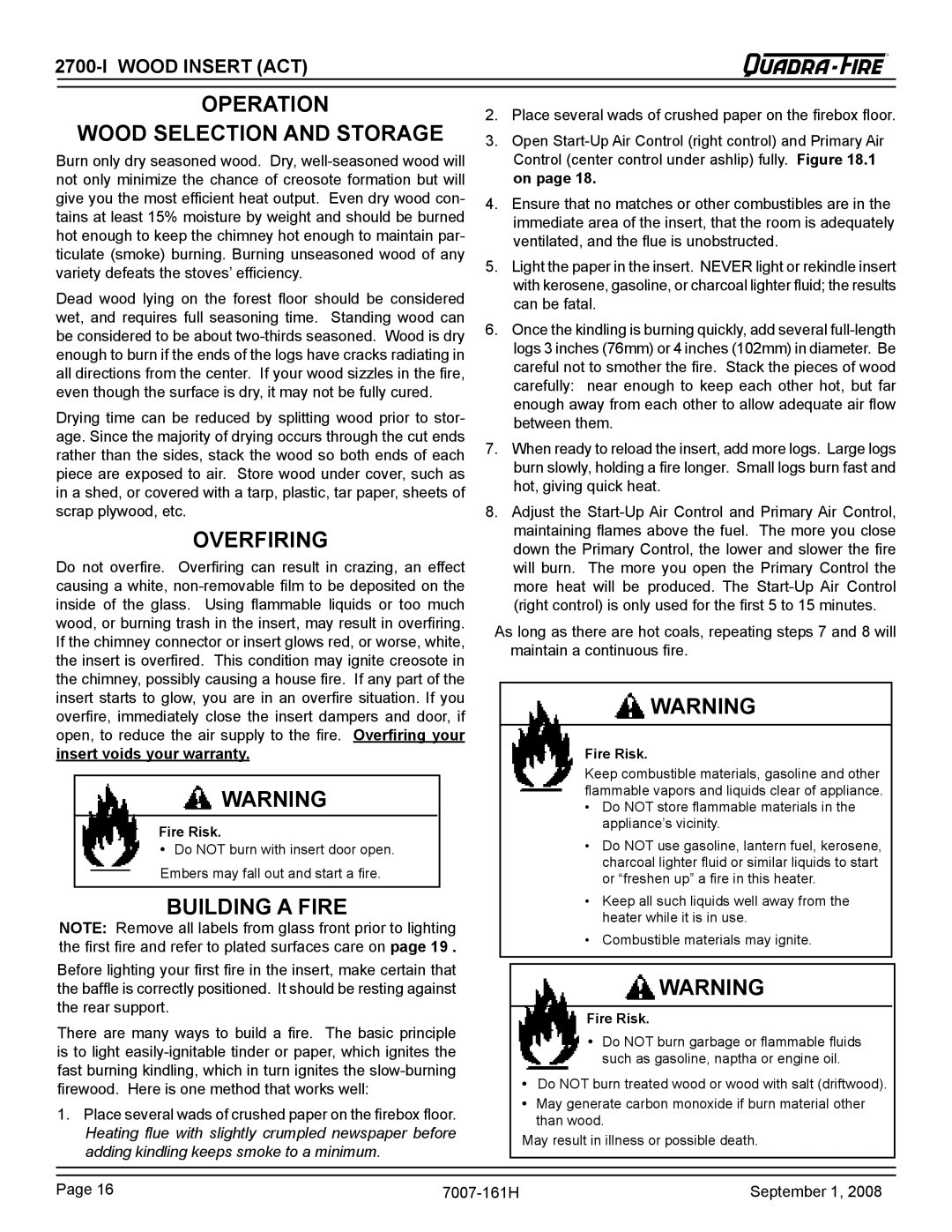
2700-I WOOD INSERT (ACT)
R
OPERATION
WOOD SELECTION AND STORAGE
Burn only dry seasoned wood. Dry,
Dead wood lying on the forest floor should be considered wet, and requires full seasoning time. Standing wood can be considered to be about
Drying time can be reduced by splitting wood prior to stor- age. Since the majority of drying occurs through the cut ends rather than the sides, stack the wood so both ends of each piece are exposed to air. Store wood under cover, such as in a shed, or covered with a tarp, plastic, tar paper, sheets of scrap plywood, etc.
OVERFIRING
Do not overfire. Overfiring can result in crazing, an effect causing a white,
![]() WARNING
WARNING
Fire Risk.
•Do NOT burn with insert door open. Embers may fall out and start a fire.
BUILDING A FIRE
NOTE: Remove all labels from glass front prior to lighting the first fire and refer to plated surfaces care on page 19 .
Before lighting your first fire in the insert, make certain that the baffle is correctly positioned. It should be resting against the rear support.
There are many ways to build a fire. The basic principle is to light
1.Place several wads of crushed paper on the firebox floor. Heating flue with slightly crumpled newspaper before adding kindling keeps smoke to a minimum.
2.Place several wads of crushed paper on the firebox floor.
3.Open
Control (center control under ashlip) fully. Figure 18.1 on page 18.
4.Ensure that no matches or other combustibles are in the immediate area of the insert, that the room is adequately ventilated, and the flue is unobstructed.
5.Light the paper in the insert. NEVER light or rekindle insert with kerosene, gasoline, or charcoal lighter fluid; the results can be fatal.
6.Once the kindling is burning quickly, add several
7.When ready to reload the insert, add more logs. Large logs burn slowly, holding a fire longer. Small logs burn fast and hot, giving quick heat.
8.Adjust the
As long as there are hot coals, repeating steps 7 and 8 will maintain a continuous fire.
![]() WARNING
WARNING
Fire Risk.
Keep combustible materials, gasoline and other flammable vapors and liquids clear of appliance.
•Do NOT store flammable materials in the appliance’s vicinity.
•Do NOT use gasoline, lantern fuel, kerosene, charcoal lighter fluid or similar liquids to start or “freshen up” a fire in this heater.
•Keep all such liquids well away from the heater while it is in use.
•Combustible materials may ignite.
![]() WARNING
WARNING
Fire Risk.
•Do NOT burn garbage or flammable fluids such as gasoline, naptha or engine oil.
•Do NOT burn treated wood or wood with salt (driftwood).
•May generate carbon monoxide if burn material other than wood.
May result in illness or possible death.
Page 16 | September 1, 2008 |
